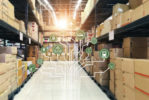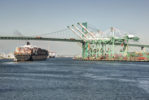
Home » Are Your Biggest And Most Loyal Customers Making You Money? Maybe Not
Are Your Biggest And Most Loyal Customers Making You Money? Maybe Not
April 1, 2003
With the advent of customer relationship management, electronic point-of-sale data and sophisticated demand forecasting, most companies have more information about their customers' past and prospective buying behavior than ever before. Some even have begun using that knowledge to capture new customers and increase existing-customer sales - and many more aspire to do so. But this rosy scenario has a very large thorn: With few exceptions, organizations haven't a clue as to which of these customers are boosting profits and which are bleeding them away.
Too many companies "still evaluate their customers by the seat-of-their-pants rather than evaluating them by the numbers," says Roger K. Harvey, president of Value Associates, in a white paper on Customer Profitability Analysis. Companies that cannot accurately identify their most profitable customers, or even worse, are unable to define customer value in terms of corporate strategy are "putting their company's overall profitability and survival at risk," he says.
The numbers show why. While most managers are aware that 20 percent of customers provide 80 percent of sales, few realize that from a profitability standpoint, the top 20 percent account for well over 100 percent of total profits. Research by Robert S. Kaplan and V.G. Narayanan of the Harvard Business School, published by Acorn Systems, shows that the top 20 percent of customers typically generate between 150 percent and 300 percent of total profits; the middle 70 percent of customers about break even, and the least profitable 10 percent of customers lose 50 percent to 200 percent of total profits.
So why not just ditch this last 10 percent? Aside from internal pressure, this group often includes a company's largest and highest profile customers. "A company cannot lose large amounts of money with small customers," write Kaplan and Narayanan. "It doesn't do enough business with a small customer to incur large (absolute) losses. Only a large customer, working in a particularly perverse way can be a large-loss customer."
Other recent research by Werner Reinartz of France's Insead and V. Kumar of the University of Connecticut (published in the July 2002 Harvard Business Review) indicates that a company's most loyal customers similarly contribute little to the bottom line. In one high-tech company studied, about half the customers who made regular purchases for at least two years "barely generated a profit." Conversely about half of the most profitable customers were blow-ins, buying a great deal of high-margin products in a short time before completely disappearing. Additional companies studied by the researchers echoed this experience. "What we've found is that the relationship between loyalty and profitability is much weaker - and subtler - than the proponents of loyalty programs claim," they wrote. "Specifically, we discovered little or no evidence to suggest that customers who purchase steadily from a company over time are necessarily cheaper to serve, less price sensitive or particularly effective at bringing in new business." Indeed, money spent to identify and reward loyal customers may actually cost more than the customer is worth.
Clearly, a better understanding of customer profitability is needed if companies are to attract and keep customers that improve profits, while converting to profitability - or firing - those that do not.
"Companies are starting to pay more attention to this issue, particularly with the change in the economy," says Rob Schoenphaler, vice president of the supply-chain practice at BearingPoint, formerly KPMG Consulting. "It's something they have been aware of for quite some time, but they now are starting to take it more seriously."
One indication of this is a five-year, $100m research initiative announced last fall by AMR Research, Boston, on Demand and Revenue Management. Phase One of this project, AMR says, is understanding customer demand and the first stage of that "is customer profitability and segment analysis, to understand the value of each customer by product and segment. This insight is critical to all future decisions on price, promotion, product mix and place as well as the supply-chain decisions related to lead times and inventory or capacity allocation."
How to Get There
AMR's research doubtless will shed light on how to develop this information. For now, however, there are no "magic bullets." Depending on depth and breadth, solutions can include an amalgam of pieces from CRM, supply-chain management, enterprise resource management, activity-based costing (ABC), data mining, and number-crunching analytics.
It's not that the basic formula for calculating customer profitability is difficult. Customer revenue less cost-to-serve is, on its face, an exercise in "third-grade mathematics," says Tom Humbarger, president of The Humbarger Consulting Group. Execution of that formula, however, is far from simple. "In order to understand the value of a customer, an organization needs to be able to identify at an individual level both the revenue and expense or cost associated with selling and servicing customers," he says. "However, operational systems do not always do a good job of providing the necessary information to make these calculations."
Similarly, Kaplan and Narayanan note that financial systems provide no requirement or incentive for companies to assign their operating expenses to customers. "Calculating the cost-to-serve for individual customers and the assignment of relevant SG&A [selling, general and administrative] expenses to customers requires extensive extra computations," they say.
Just how difficult assigning fixed costs can be is described by William Kahn, executive vice president-managed analytics, at Seurat, a company that analyzes customer data for precision marketing purposes. "Companies need to be very explicit about this point, but it is seldom discussed," he says. "When we introduce it with clients, it's amazing how much confusion it can cause."
"For example," he says, "let's say a company has $1m in fixed costs every year and $10m worth of orders. It might decide to just assign 10 cents of fixed cost to every dollar in sales. But let's say some of those orders are 100 times larger than others and the accountant comes along and says, 'you know, in running the accounting system, it doesn't matter whether I print a $10 or a $10,000 invoice, it costs the same.' So rather than partitioning the $1m of cost across $10m of sales, he suggests that you partition the cost against the 100,000 orders that got placed or $10 an order, regardless of order size. On the surface, both sound sensible - normalizing by the value of an order or normalizing by the number of orders - and there are other ways to do it as well. In a pick-and-pack operation you might want to normalize by the number of line items that get picked.
"Either way, establishing the unitization for the fixed-cost assignment requires a substantive understanding of what is consuming the resource," he says. "Awesome debates go on around this. It's very complicated and can be controversial because no one has the right answer."
Determining direct customer costs involves looking at both front- and back-end activities. On the front end, says Kahn, this means using CRM systems to track and measure every customer interaction - every phone call the customer makes, how long it lasts, the level of service that was required, every order they place, every return they make - full, granular data. Back-end costs to serve include pick-and-pack, loading, transportation, waiting time to unload and returns processing.
To get a true picture of these costs, most companies need to employ some level of activity-based costing. One company that specializes in ABC and profit optimization is Acorn Systems. In fact, Acorn has a patent pending on its approach.
When working with customers, says company CEO Leland Putterman, Acorn first creates a model that is based on where an organization is spending its time. "We do what we call time-based algorithms," he says. "We might do time-in-motion studies, or we might interview workers. For example, we may meet with order-entry people and ask them how long does it takes them to process an order, what are the steps, what determines which orders take longer. Maybe they will say it depends on the number of line items, or if it is a new customer it takes 10 minutes longer to set that up, or a rush order takes an additional 5 minutes. We go through all those steps and basically build a time-based algorithm."
Putterman stresses that these models go through several validation phases within the company to make certain that everyone agrees the numbers are right. "Most traditional costing systems are built by finance and finance does the allocation, so it never gets buy-in from the rest of the company," he says. "Everyone will argue about it until the cows come home because it's not based on real numbers."
Once the model is established, Acorn takes feeds from the company's enterprise systems and runs that information through the cost equation. "So on the order that we take from ERP or wherever, you will have the number of line items. Our model will multiply the number of line items by the amount of time each one took, then will add time for a rush order or a change order or whatever, depending on which of those things are in data.
"We want to get as much data as we can," says Putterman. "So depending on the organization, we might take feeds from five, six or seven systems, including CRM, SCM, warehouse, transportation, and so on."
Another differentiator of Acorn's method is that it uses individual transaction data instead of averages, Putterman says. "Most costing systems take total expenses for an activity and divide that by the number of orders to get an average rate per order or per delivery," he says. "We don't do that because businesses don't work that way; they are much more variable."
For example, he says, should a company allocate more cost to a customer who is 200 miles away as opposed to 20 miles away? It would seem so, but what if the one who is 20 miles away consistently requires the driver to wait three hours to unload and the one 200 miles away consistently unloads immediately? They may have the same costs. "Our system takes those anomalies into account," he says. "The negative is that the numbers we use typically are a month old, but, hey, in the land of the blind the one-eyed man is king."
Such an approach takes considerable effort, though it is not as time consuming as one might think, Putterman says. At Fischer Scientific, for example, implementation took less than six months for an enterprise with more than half a million products, 325,000 customers, 19 facilities and in excess of a million transactions per month. And Putterman notes that most of Acorn's customers belong to its 100 percent ROI club, meaning that they earn back their investment within the first year. ARC Advisory Group analyst Steve Banker says his experience interviewing Acorn customers tends to confirm Putterman's comments. "I have never met customers who like their software vendor as much as Acorn's customers like them," he says.
Using the Data
On the revenue side, getting the data is easier. Most systems can run a report showing how much each customer purchased over a given time period. The difficulty here is making certain that all business units or divisions are included. "Often different business units within the same company sell to the same customer, but track their transactions in different systems," says Peter Koudal of Deloitte Consulting. "Then, you obviously need to look across these divisions to see which customers you really should be investing in."
Granular ABC analyses pinpoint the "why" as well as the "who" of profitability, enabling companies to see what causes some customers to have costs too high for their revenue. "You can't get to the root cause of profitability issues without looking at orders, product mix, line items, delivery, things like that," says Putterman. "With our system, you can slice the data however you want because we are starting at the atomic level, so you can run a customer profitability report that comes with our software and if you want to see profitability in terms of the supplier used, you get that; in terms of the product, you get that; in terms of the order, delivery route and so on."
Users often are surprised at the results of this analysis. Typically they discover that what they thought were their best customers actually are near the bottom of the list, but it can work the other way. Putterman cites one client whose largest customer was DuPont. Going into the analysis, the client thought DuPont was their worst customer because it was perceived as being very difficult and demanding. "When we ran the model we found that DuPont was far and away their most profitable customer," says Putterman, "so rather than going in a meeting the following week with an attitude, they went in seeking more of DuPont's business."
Without understanding the cost-to-serve and the revenue from customers, companies end up with ineffectual service differentiation or with differentiation based on broad segmentation that has little relation to profitability, such as size, order volume, order frequency or geographical location.
"What often happens is that companies end up treating customers exactly the same and the only way they can prioritize them is through what is euphemistically called expediting," says Darius Vaskelis, vice president of Inforte, a customer relationship and demand management consultancy. "That means someone walking around a plant, screaming 'If we don't ship this to Customer A today we are going to lose the order.' They don't really have a way to differentiate service levels."
As a result, they have no way to intelligently allocate resources, he says. "If you have a limited supply or limited production capacity, how do you decide who gets served first, what percentage they get and how quickly it is shipped?"
And how do you capture those "blue birds" that show up once a quarter, place a big, profitable order, and then disappear, he asks. "These people may get indifferent service because you've never heard of them, and in the meantime you are running around expediting to a company you never make a dime from."
The most profitable customers always should get a different service level in the fulfillment process, he says. "Maybe you have two or three outrageously valuable customers who are responsible for most of the profits of your business unit. You might give those customers their own fulfillment team or even their own production line. Maybe they get their own dock that no one else can touch. You can take this all the way back to planning raw materials purchases based on the value of the customer who is going to end up using the final product. Then this profitability consciousness starts to permeate everything you do as a firm, and the benefits of CRM and the benefits of customer-centric processes essentially get magnified so it actually starts to drive profitability everywhere."
Differentiating service levels also is a way to move customers that are borderline or unprofitable into the profitable column, says Vaskelis. "Say you have a very loyal group of customers that you just don't make money on. You may build a web portal and ask them to use the portal to check on order status instead of calling your customer service people or you may convince them to place larger orders less frequently - whatever it takes to inch up their profit level."
This approach comes with a warning, though. "Before you go out and point the finger at a customer, you had first better make sure the problem is not your fault," says Putterman. "Make sure it's not your own internal processes that are adding to the cost of service."
Sometimes there is no getting around the fact that a company is simply charging a customer too little. "Often the problem with profitability is more on the top line," says Doug Turk, executive vice president of Inforte. "Profitability is the smoke, and the fire is either cost or revenue. When it's revenue, you have a pricing issue."
If a customer is unwilling or unable to modify its service requirements or to spend enough for a company to profit from their business, then it is best to let them go. " Ideally you can re-price people or divert them to a better delivery model or a better order size or a more automated form of self-service," says Kahn. "Ideally you can do that, but if you can't - get rid of them. Let your competitors deal with these customers. You will be better off."
RELATED CONTENT
RELATED VIDEOS
Subscribe to our Daily Newsletter!
Timely, incisive articles delivered directly to your inbox.
Popular Stories

2024 Supply Chain Management Resource Guide: There's Only One Way Off a Burning Platform
VIEW THE LATEST ISSUECase Studies
-
Recycled Tagging Fasteners: Small Changes Make a Big Impact
-

Enhancing High-Value Electronics Shipment Security with Tive's Real-Time Tracking
-

Moving Robots Site-to-Site
-
JLL Finds Perfect Warehouse Location, Leading to $15M Grant for Startup
-
Robots Speed Fulfillment to Help Apparel Company Scale for Growth



